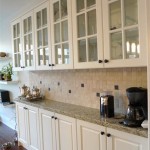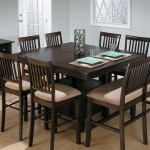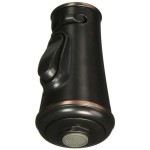Pictures of Tiles in Kitchen: A Comprehensive Guide to Styles, Materials, and Design Ideas
Kitchen tiles are a fundamental element in kitchen design, serving both aesthetic and practical purposes. They protect walls and floors from moisture, spills, and everyday wear and tear while contributing significantly to the overall style and ambiance of the space. Reviewing images of various kitchen tile installations can provide valuable inspiration and inform decision-making when planning a kitchen renovation or new build. This article explores different tile types, design patterns, and application methods, offering a comprehensive understanding of how to effectively utilize tiles in kitchen spaces.
Understanding Different Types of Kitchen Tiles
The selection of kitchen tiles is extensive, encompassing a wide range of materials, sizes, shapes, and finishes. Understanding the characteristics of each type is crucial for making an informed choice that aligns with both aesthetic preferences and functional requirements.
Ceramic Tiles: Ceramic tiles are a popular choice due to their affordability and versatility. They are manufactured from clay that is fired at high temperatures, resulting in a durable and water-resistant surface. Ceramic tiles are available in a vast array of colors, patterns, and textures, making them suitable for various kitchen styles. They are relatively easy to clean and maintain, although they can be susceptible to chipping or cracking under heavy impact. Ceramic tiles are often glazed, which further enhances their water resistance and provides a glossy or matte finish. Unglazed ceramic tiles, also known as terracotta, offer a more rustic and natural look but require sealing to prevent staining and water absorption.
Porcelain Tiles: Porcelain tiles are a denser and more durable alternative to ceramic tiles. They are made from a finer clay and fired at higher temperatures, resulting in a material that is less porous and more resistant to water absorption, staining, and scratching. Porcelain tiles are an excellent choice for high-traffic areas, such as kitchen floors, and are suitable for both indoor and outdoor applications. They are available in a variety of finishes, including polished, matte, and textured options. One specific type of porcelain tile, through-body porcelain, has the same color and pattern throughout its entire thickness, making any chips or scratches less noticeable. This makes through-body porcelain an even more durable and long-lasting option for kitchens.
Natural Stone Tiles: Natural stone tiles, such as granite, marble, slate, and travertine, offer a luxurious and timeless aesthetic. Each stone has unique veining, color variations, and textures, adding character and individuality to the kitchen space. Natural stone tiles are relatively expensive compared to ceramic and porcelain tiles, and they require regular sealing to protect them from staining and water damage. They are also typically more porous and susceptible to scratching, so careful maintenance is essential. Despite these drawbacks, the beauty and durability of natural stone tiles make them a desirable option for high-end kitchen designs. The specific type of stone will further influence its properties. For example, granite is known for its exceptional durability and resistance to heat, making it a good choice for countertops and backsplashes. Marble, on the other hand, is more porous and requires more cautious handling.
Glass Tiles: Glass tiles add a sleek and modern touch to kitchen backsplashes and accent walls. They are non-porous, easy to clean, and resistant to staining. Glass tiles are available in a wide range of colors, shapes, and sizes, allowing for creative and customized designs. They are often used to create mosaic patterns or as accent pieces to complement other tile types. While glass tiles are durable, they can be susceptible to scratching and chipping, so care should be taken to avoid impact from sharp objects. Their reflective qualities can also brighten up a kitchen space, creating a feeling of spaciousness.
Metal Tiles: Metal tiles, such as stainless steel, copper, and brass, offer a contemporary and industrial aesthetic. They are durable, heat-resistant, and easy to clean, making them a practical choice for kitchen backsplashes. Metal tiles can be used as accent pieces or to create a bold and dramatic statement. They are typically more expensive than ceramic or porcelain tiles and may require special cleaning agents to maintain their shine. Over time, some metal tiles may develop a patina, adding to their unique character.
Exploring Various Tile Design Patterns and Layouts
Beyond the material itself, the chosen tile pattern and layout significantly influence the overall appearance of the kitchen. Different patterns can create visual interest, enhance the sense of space, and complement the architectural style of the home.
Subway Tile: Subway tile is a classic and versatile option that remains a popular choice for kitchen backsplashes. These rectangular tiles, typically measuring 3x6 inches, are traditionally installed in a horizontal offset pattern, creating a timeless and clean look. Subway tiles are available in a variety of colors and finishes, allowing for customization to suit different kitchen styles. They can also be installed in vertical stacks or herringbone patterns for a more modern twist. Using contrasting grout colors can further emphasize the tile pattern and add visual interest.
Herringbone Pattern: The herringbone pattern is a sophisticated and visually appealing layout that adds a touch of elegance to kitchen floors and backsplashes. It involves arranging rectangular tiles in a V-shaped pattern, creating a distinctive and dynamic design. Installing a herringbone pattern requires precision and attention to detail, but the results are worth the effort. This pattern is particularly effective in creating a focal point in the kitchen or defining a specific area, such as a backsplash behind the cooktop. The scale of the tile can also influence the impact of the herringbone pattern; smaller tiles create a more intricate and detailed look, while larger tiles offer a bolder and more contemporary aesthetic.
Mosaic Tiles: Mosaic tiles consist of small pieces of tile arranged on a mesh backing, allowing for intricate and detailed designs. They are available in a wide range of materials, including ceramic, porcelain, glass, and natural stone. Mosaic tiles are often used to create decorative borders, accent walls, or intricate backsplash patterns. They can also be used to add texture and visual interest to larger tile installations. Mosaic tiles require careful installation to ensure a smooth and even surface, and grout selection is crucial for defining the pattern and color scheme.
Geometric Patterns: Geometric patterns, such as hexagons, chevrons, and triangles, offer a modern and eye-catching alternative to traditional tile layouts. These patterns can be created using individual tiles or pre-assembled mosaic sheets. Geometric patterns are particularly effective in adding visual interest to kitchen floors and backsplashes, and they can be customized to suit different design styles. The use of contrasting colors and textures can further enhance the impact of geometric patterns. For example, a hexagon floor tile pattern in varying shades of gray can create a subtle yet sophisticated look.
Large Format Tiles: Large format tiles, typically measuring 12x24 inches or larger, create a sleek and contemporary look in kitchens. They minimize grout lines, resulting in a cleaner and more spacious appearance. Large format tiles are particularly well-suited for kitchen floors, as they reduce the number of seams where dirt and grime can accumulate. They are also a good choice for backsplashes, creating a seamless and modern aesthetic. Installing large format tiles requires a level surface and careful alignment to avoid lippage (uneven tile edges). The size of the tile can make the kitchen appear larger, especially in smaller spaces.
Practical Considerations for Kitchen Tile Selection and Installation
Beyond aesthetics, several practical considerations should be taken into account when selecting and installing kitchen tiles. These factors include durability, water resistance, ease of maintenance, and cost.
Durability and Wear Resistance: The durability and wear resistance of kitchen tiles are crucial, especially for high-traffic areas such as floors. Porcelain tiles are generally considered the most durable option, followed by natural stone and ceramic tiles. The Porcelain Enamel Institute (PEI) rating system is used to assess the abrasion resistance of glazed ceramic and porcelain tiles. A higher PEI rating indicates greater resistance to scratching and wear. For kitchen floors, tiles with a PEI rating of 3 or higher are recommended.
Water Resistance and Stain Resistance: Kitchen tiles should be water-resistant and stain-resistant to prevent damage from spills and moisture. Porcelain tiles are naturally water-resistant, while ceramic and natural stone tiles may require sealing to prevent water absorption. The use of a high-quality grout sealant is also essential for protecting grout lines from staining and mildew. Regular cleaning with a mild detergent and water is recommended to maintain the appearance of kitchen tiles and prevent the build-up of dirt and grime.
Maintenance and Cleaning: The ease of maintenance and cleaning is an important consideration for kitchen tiles. Smooth, non-porous tiles, such as porcelain and glass, are generally easier to clean than textured or porous tiles, such as natural stone. Regular cleaning with a mild detergent and water is typically sufficient for maintaining the appearance of kitchen tiles. Avoid using harsh chemicals or abrasive cleaners, as they can damage the tile surface or grout. Sealing natural stone tiles regularly will also help to prevent staining and water damage.
Cost and Budget: The cost of kitchen tiles can vary significantly depending on the material, size, pattern, and installation complexity. Natural stone tiles are typically the most expensive option, followed by glass and metal tiles. Ceramic and porcelain tiles are generally more affordable. It is important to establish a budget before starting a kitchen tile project and to consider all associated costs, including materials, installation, and grout.
Professional Installation vs. DIY: Installing kitchen tiles can be a challenging task, especially for intricate patterns or large format tiles. While DIY installation can save money, it is important to have the necessary skills and tools to ensure a professional-looking result. Hiring a professional tile installer can ensure that the tiles are properly aligned, leveled, and grouted, preventing future problems such as cracking or water damage. A professional installer can also provide valuable advice on tile selection and layout.
.webp?strip=all)
Maximize Your Small Kitchen Space With These Tile Tips Adila Ceramic

97 Best Grey Kitchen Wall Tile Interior Design Ideas Images 2025

Kitchen Wall Tile Modern Classic Designs The Shop

Kitchen Wall Tile Modern Classic Designs The Shop

Modern Kitchen Tile Designs Embracing The Latest Trends Lima Ceramic Stamford

12 6 X 24 Tribeca Mixed Plank Wall Tile Club Box

170 Glossy Kitchen Wall Tile Interior Design Ideas Images 2025

9 Kitchen Tile Ideas To Transform Your Cooking Space

Wondering Which Tiles Are Best For The Kitchen Backsplash Architectural Digest

Modern Kitchen Tiles For Wall And Floor








